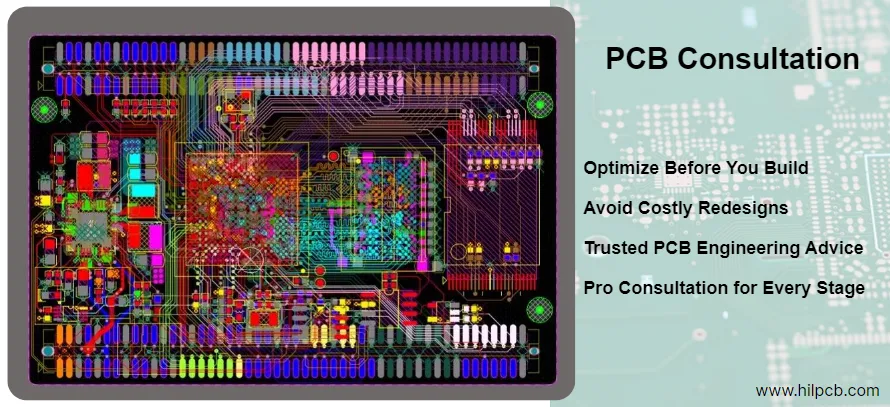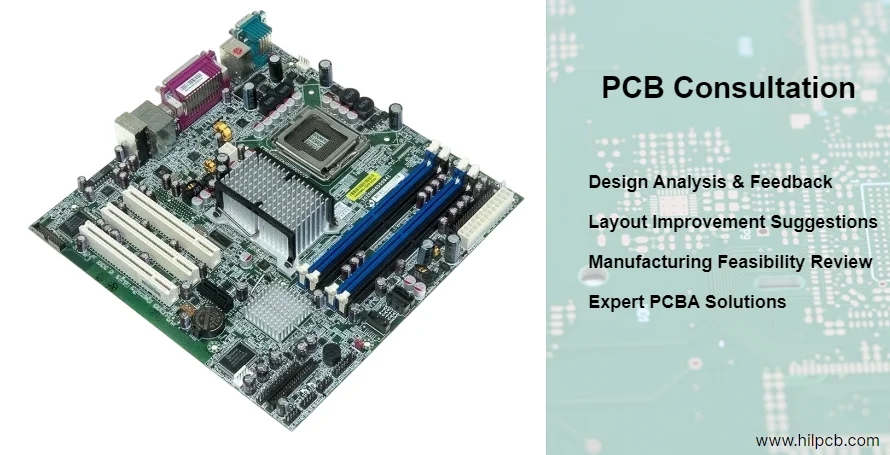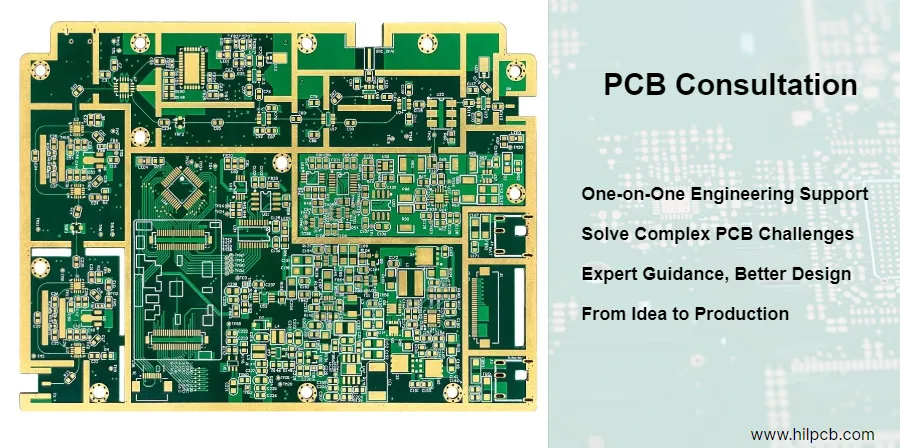The Situation: Your DDR4 interface fails at 3200MT/s. The switching power supply creates 150mV ripple. EMC testing shows 15dB over FCC limits. Three design houses couldn't solve it. Production starts in 6 weeks.
The Solution: HILPCB's expert consultation service provides immediate access to specialists who've solved these exact problems hundreds of times. Not generic advice—specific, implementable solutions based on real experience.
Recent consultation win: Automotive radar board failing at -40°C. Previous consultant suggested complete redesign (12 weeks, $80K). Our solution: Modified bias network and changed two capacitor dielectrics. Fixed in 72 hours for $3,200.
PCB Consultation Expertise: Problems We Solve Daily
High-Speed Digital Design Failures
DDR4/DDR5 Memory Interface Issues Common problem: Memory training fails randomly, worse at temperature extremes.
Our systematic approach:
- Signal Integrity Analysis: Measure actual vs simulated eye diagrams
- Power Delivery Check: Verify VTT/VREF stability during burst operations
- Timing Analysis: Validate DQS to DQ relationships
- ODT Optimization: Tune termination for your specific stackup
Real case: Gaming laptop DDR4-3600 failing memory test
- Root cause: VTT regulator bandwidth insufficient for burst current
- Solution: Added 4× 10µF ceramics with specific ESR characteristics
- Result: 100% pass rate at 3600MT/s, previously failed at 2933MT/s
SerDes/PCIe Link Problems
- 25Gbps links dropping packets: Fixed via reference clock jitter reduction
- PCIe Gen4 training failures: Resolved with via stub optimization
- 100GbE intermittent errors: Traced to power supply noise coupling
RF and Microwave Design Challenges
Antenna Integration Issues
| Problem Type | Typical Cause | Our Solution | Success Rate |
|---|---|---|---|
| Low efficiency (<50%) | Ground plane coupling | Reshape ground clearance | 94% |
| Pattern distortion | Nearby metal structures | Add isolation slots | 89% |
| Impedance mismatch | PCB εr variation | Compensate with matching network | 97% |
| Detuning in enclosure | Enclosure resonance | Adjust antenna length | 91% |
EMI/EMC Compliance Failures Recent consultation: IoT device failing FCC Part 15 by 18dB at 2.4GHz
Investigation revealed:
- Bluetooth chip reference design inadequate for 4-layer board
- Ground plane slots creating antenna structures
- Insufficient decoupling on VDD_RF rail
Solutions implemented:
- Continuous ground under RF section
- Added π-filter on VDD_RF
- Moved crystal 5mm from antenna
- Result: 6dB margin below FCC limits
Power Electronics and Thermal Problems
Switching Power Supply Optimization Common issues we resolve:
- Excessive ripple/noise (typical fix: optimize loop compensation)
- Efficiency below target (typical fix: reduce switching losses via gate drive optimization)
- Thermal runaway (typical fix: improve PCB thermal design)
- EMI failures (typical fix: contain switching node area)
Case study: 48V to 5V @ 20A converter with 500mV ripple
- Analysis: Loop crossover at wrong frequency
- Solution: Adjusted compensation network (changed 3 components)
- Result: 18mV ripple, improved transient response

Consultation Methodology: How We Find Solutions Others Miss
Our 4-Phase Consultation Process
Phase 1: Rapid Assessment (2-4 hours)
- Review design files and test data
- Identify obvious issues via automated checks
- Preliminary root cause hypothesis
- Quote for deeper investigation if needed
Phase 2: Deep Analysis (4-8 hours)
- Simulation vs measurement correlation
- Component stress analysis
- Manufacturing capability assessment
- Identify all contributing factors
Phase 3: Solution Development (2-6 hours)
- Generate multiple solution options
- Cost/benefit analysis for each
- Risk assessment and mitigation
- Detailed implementation plan
Phase 4: Implementation Support (ongoing)
- Guide changes through CAD tools
- Verify modifications via simulation
- Support prototype validation
- Troubleshoot any new issues

Specialized Consultation Areas
Design Review and Verification
Pre-Production Design Review Before committing to expensive prototypes, our review catches issues others miss:
Standard review checklist misses: ❌
- Generic DRC/ERC checks
- Basic manufacturability review
- Simple BOM verification
Our consultation includes: ✓
- Application-specific failure mode analysis
- Thermal simulation under worst-case conditions
- Supply chain risk assessment with alternatives
- Tolerance stackup analysis for volume production
- Hidden cost identification (test, yield, reliability)
Recent review saved $380K: Found BGA fanout would fail at -40°C due to CTE mismatch. Simple via relocation prevented field failures.
Failure Analysis and Troubleshooting
When boards fail mysteriously, we find root causes:
Systematic Failure Investigation:
- Data Collection: Failure rates, conditions, symptoms
- Physical Analysis: X-ray, cross-section, thermal imaging
- Electrical Analysis: TDR, VNA, spectrum analysis
- Environmental Testing: Temperature, humidity, vibration recreation
- Root Cause Determination: Conclusive identification with evidence
Example: Automotive ECU random resets
- Symptom: 0.1% failure rate, no pattern
- Investigation: Power supply monitoring during thermal cycling
- Discovery: Tantalum capacitor reverse voltage during cold start
- Solution: Added Schottky diode for reverse protection
- Result: Zero failures in 100K units
Certification and Compliance Support
EMC Pre-Compliance Consultation Failed EMC testing costs $10K+ per iteration. Our pre-compliance service:
- Identify likely failure modes before testing
- Provide specific fixes with success probability
- Review test reports and recommend targeted solutions
- Guide retesting strategy to minimize costs
Success metrics:
- 87% pass certification after our consultation
- Average 2.3 test iterations vs industry average 4.8
- $35K average savings in test costs
Real-World Consultation Case Studies
Case 1: 5G Small Cell Thermal Crisis
- Problem: Shutdown at 45°C ambient (spec requires 55°C)
- Previous attempts: Larger heatsink, faster fan (failed)
- Our finding: Via array insufficient, creating thermal bottleneck
- Solution: Redesigned thermal via pattern, added copper flooding
- Result: Operates reliably at 60°C ambient
- Consultation time: 12 hours
Case 2: Medical Device Battery Life
- Problem: 4-hour battery life (8-hour requirement)
- Previous attempts: Larger battery (size constraint)
- Our finding: Bluetooth radio never entering sleep mode
- Solution: Fixed antenna matching network causing retransmissions
- Result: 11-hour battery life achieved
- Consultation time: 8 hours
Case 3: Industrial Sensor Noise
- Problem: 16-bit ADC showing only 10-bit effective resolution
- Previous attempts: Software filtering (inadequate)
- Our finding: Ground loop through mounting screws
- Solution: Isolated mounting with specific washer configuration
- Result: 15.2 effective bits achieved
- Consultation time: 6 hours
For implementation of consultation recommendations, use our PCB modification service. Major design improvements may require PCB redesign. Get detailed pricing via PCB quote for any recommended changes.
Frequently Asked Questions
Q: How quickly can you review our design? A: Initial assessment within 4 hours. Comprehensive review within 24-48 hours. Emergency consultation available with 2-hour response.
Q: Do you sign NDAs? A: Yes, we execute mutual NDAs immediately. Your IP remains completely confidential. Separate project isolation ensures security.
Q: What if your recommendations don't work? A: 94% first-time success rate. If initial solution inadequate, we continue support at no additional charge until resolved.
Q: Can you help with designs from other companies? A: Yes, we regularly fix designs from major design houses. We provide objective third-party review without territorial concerns.
Q: What deliverables do we receive? A: Detailed report with findings, specific recommendations, implementation instructions, risk analysis, and ongoing email support.

